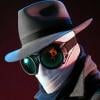Creating specular lights.
 daveso
Posts: 7,839
daveso
Posts: 7,839
what is the secret in creating your own specular lights? I have tried using spotlights, etc, but there is nothing in eyes so it just looks flat.
Post image for you to see what I'm talking about. This is like a flashlight shining onto somebody ... its bright. sharp shadows. but not nothing in the eyes..there for sure should be glare. I don;t want to see more "light" added to the image, just to have the eyes glare


alexandra 8 flashlight closeup.jpg
1500 x 1875 - 1M
Post edited by daveso on


Comments
although the light is shining more on chest area ...
Actually I think that is a pretty cool render, even for a WIP. Good drama happening there.
One thing that helps is to switch your view to the light itself. That way you can get a feel for whether your light will be casting at the area you want, and whether you can reasonably expect its form to be reflected in whatever surface you're trying to cast at. Here you'll probably need to move your light up a bit and adjust its angle accordingly.
What geometry did you choose for the light? I think point lights are the trickiest to gain reflection of the form - I have better luck with disc and rectangle. I think you're getting the correct results here based on the positioning of your light, I wouldn't expect much, if any reflection on the eyes as it stands.
You can use another spotlight with a lower intensity coming from another angle and a small dispersion radius aimed more directly at the eyes to get some incident reflection going without completely ruining the effect of your main light. For instance, in this case I'd position a 2nd spotlight to your character's left, slightly in front of your character, slightly higher (or lower) than you character's eyeline and angle/point it at the eyes. You can also play with the size of the geometry to reduce (larger geometry) the sharpness of the shadows it casts to allow your primary source to better dictate the shadows.The question then is whether it makes sense to have even this minor secondary light source in your scene, but I doubt viewers would think twice. Remember that 3 point lighting is kind of a standard starting place when using spotlights - both for this reason and to give a bit more interesting volume aspect. A single light source can make things seem flat - though that's not quite happening here because of the intensity and position of your one light source.
One other thing. I can't exactly tell from this image, but make sure you've got the cornea bulge dialied up to 150% or so (I usually use 160%) and dial in an iris depth morph too if you have one. This improves the accuracy of the highlight, the overall volume effect of the eye in regard to ray bounces, and gives more surface to catch light rays.
Specular reflections are entirely based on viewing angles angles. Think about the behaviors of mirrors. You need either a window or a light source that will demonstrate a reflection toward the direction of the camera. Thus most times you need to put your specular light sources behind the camera at an altitude low enough that they will be visible as reflections in the character's eye. The bulge morph is also essential. All the best!
thanks ... actually , there is another light behind the subject, basically a rim light, so I think that brings the dfepth more. Eye bulge..i will try that..
thanks..I will give that a try.
Create a spotlight, change it to disc, make the width 80 to 120, raise the light to about eye level of the character and pull it back about 4 or 5 feet, change the light's Point At property to the character's head (you'll have to expand the character bones all the way to the head to select it), increase the Lumen until it shows up but doesn't overpower the scene. You will need to move it so that it is at an angle so the light bounces off the character's eye and into the camera. Here is the render and the top down view of the camera and specular light's placement.
OK .. it is beginning. thanks for the advice. Will need to play around with settings a bit. this is still rendering, was about 15% so the specular might improve a bit.